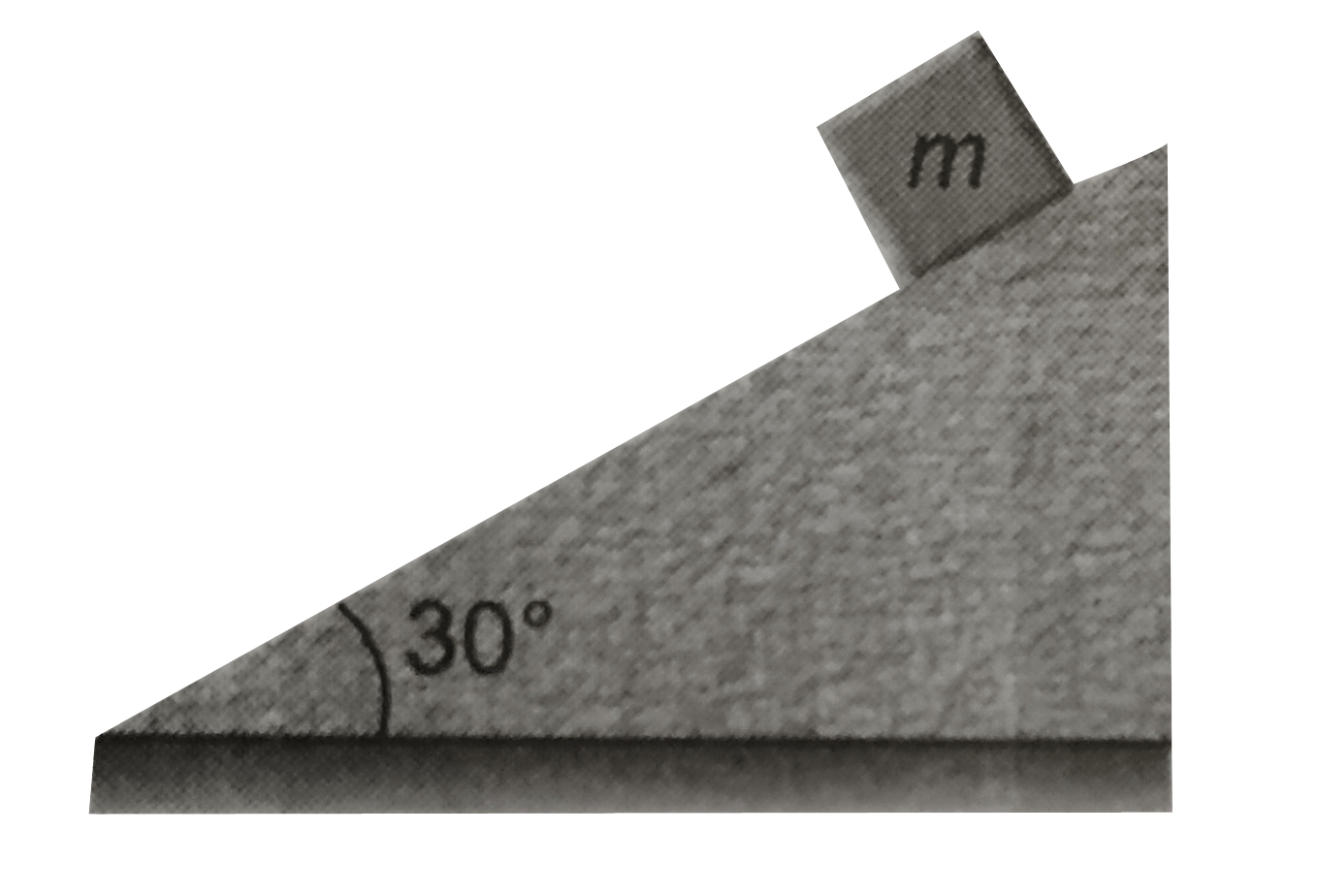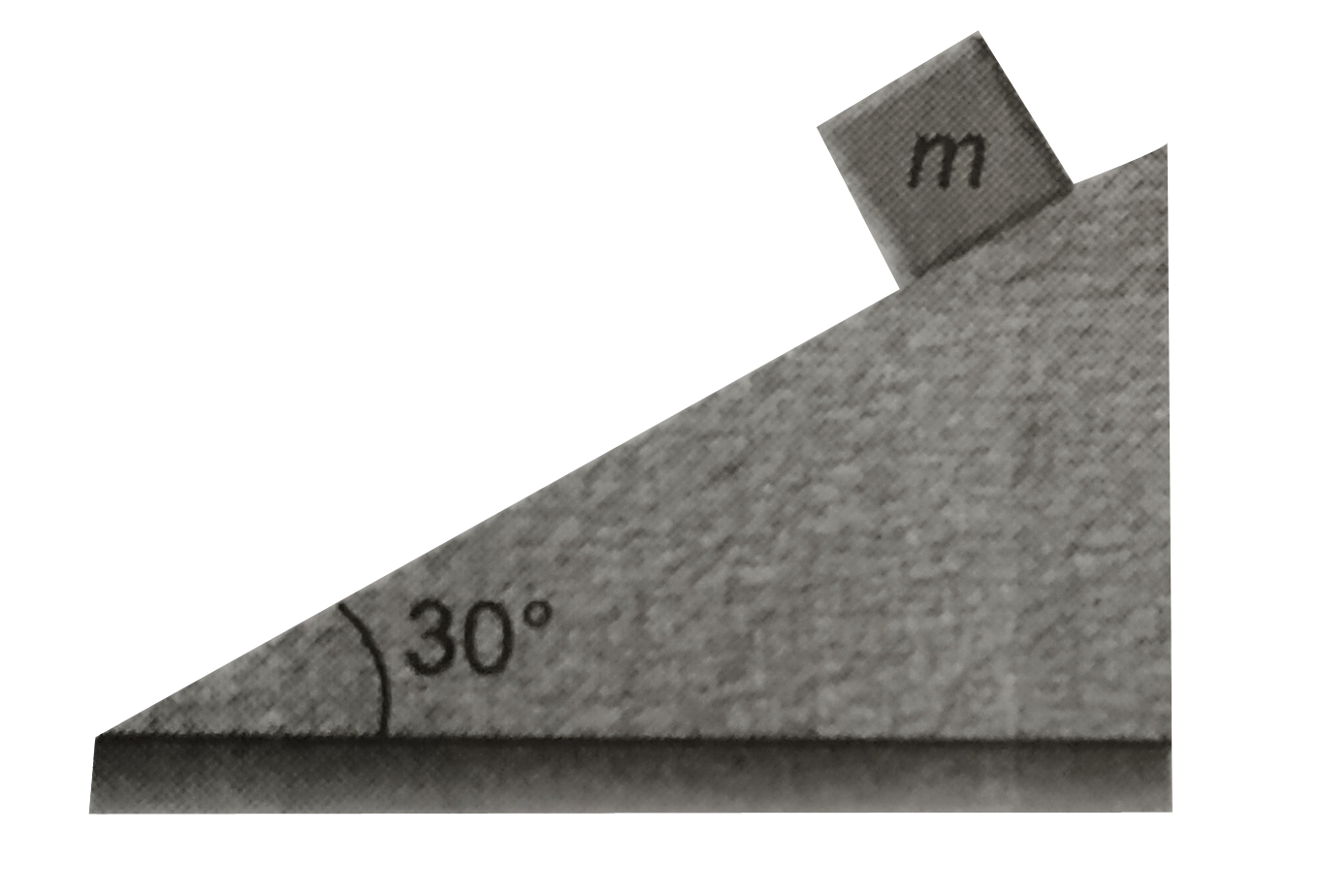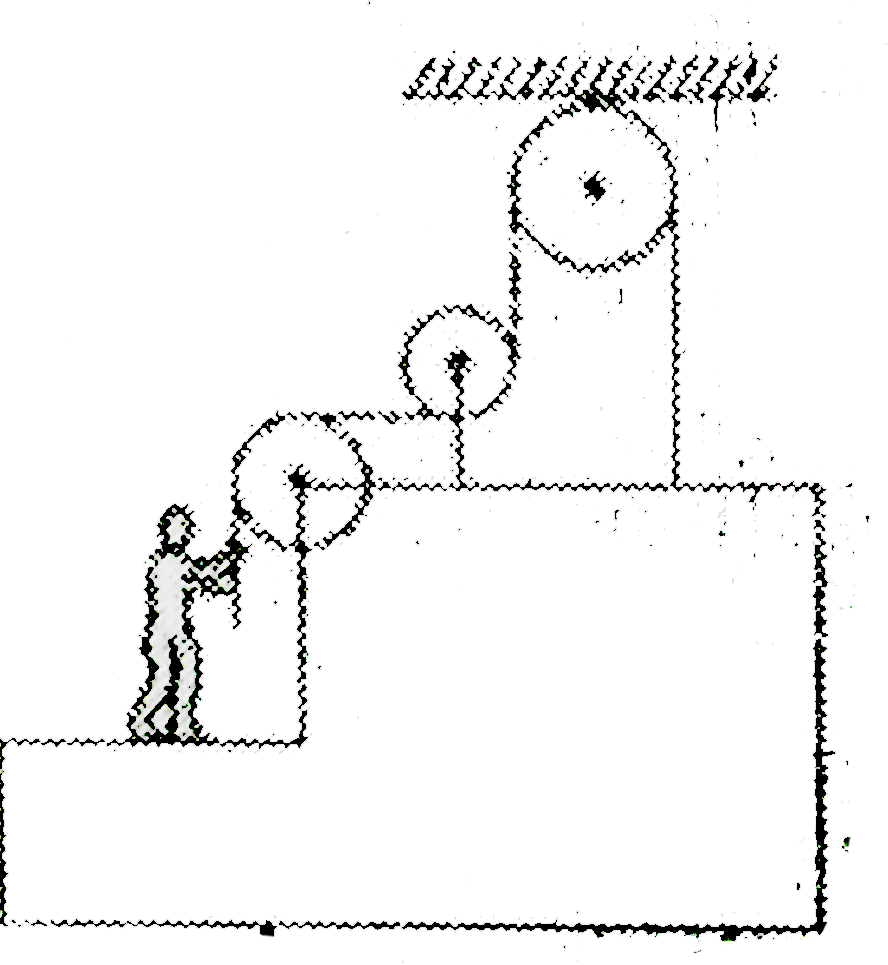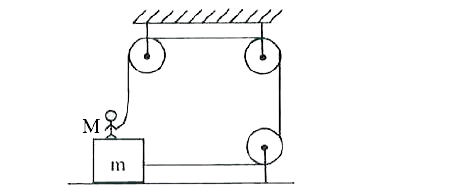Figure shows a man pulling on a string attached to a block kept on a rough block surface. Man is heavier than block. Coefficient of friction is same for both block and man. Subscripts R, B and M denote rope block and man respectively, taking string to be light. Mark the correct statement(s).

→FR/B−→FM/R always
Block begins to move earlier than man if man continues to increase his pull from zero.
→FR/Band→FM/R can be action reaction pairs.
Block can remain static if man walks with constant speed while letting string to pass through his hand.
The correct Answer is:A, B, D
→FR/B and →FM/R both are equal to tension in the rope. Friction is lesser for block than that for man. Pulling force tension is same for both of them Friction on block can keep it static.
Topper's Solved these Questions
- BOOK - BANSALCHAPTER - MASTER PRACTICE PROBLEMEXERCISE - Subjective107videos
MASTER PRACTICE PROBLEM
- BOOK - BANSALCHAPTER - MASTER PRACTICE PROBLEMEXERCISE - Additional topic70videos
MASTER PRACTICE PROBLEM
- BOOK - BANSALCHAPTER - MASTER PRACTICE PROBLEMEXERCISE - Reasoning75videos
MASTER PRACTICE PROBLEM
- BOOK - BANSALCHAPTER - FLUID MECHANICSEXERCISE - PYQS AIEEE10videos
FLUID MECHANICS
- BOOK - BANSALCHAPTER - SEMICONDUCTORSEXERCISE - CBSE Question32videos
SEMICONDUCTORS
Similar Questions
In a given system of unit standard measurement of mass is 100 gm standard measurement of length is 200 cm and standard measurement of time is 5 sec 10 J energy in the given system of unit has value N, then value of N is
02:20View SolutionThe manifestation of band structure in solids is due to
03:21View SolutionStatement-1: The numerical value (n)of a physical quantity is inversely proportional to size of unit (u) being used to measure it.
Statement-2:The magnitude of physical quantity does not change by changing the units.01:23View SolutionA cylinder of height 20m is completely filled with water. The velocity of effux of water (∈ms−1) through a small hole on the side wall of the cylinder near its bottom is
05:41View SolutionHow does the width of the depletion layer of a p-n junction diode change with decrease in reverse bias?
03:33View SolutionA man pulls a block of mass equal to himself with a light string .The coefficient of friction between the man and the floor is greater than that between the block and the floor
01:43View SolutionA man wants to slide down a block of mass m which is kept on a fixed inclined plane of inclination 30∘ as shown in the figure .Initially the block is not sliding .
To just start sliding the man pushed the block down the inclined with a force F. Now , the block starts accelerating. To move it downwards with conatant speed the man starts pulling the block with same force. Surface are such that ratio of maximum static friction to kinetic friction is 2 Now, answer the following questions.

What is the value of μs, the coefficient of static friction?03:16View SolutionA man wants to slide down a block of mass m which is kept on a fixed inclined plane of inclination 30∘ as shown in the figure .Initially the block is not sliding .
To just start sliding the man pushed the block down the inclined with a force F. Now , the block starts accelerating. To move it downwards with conatant speed the man starts pulling the block with same force. Surface are such that ratio of maximum static friction to kinetic friction is 2 Now, answer the following questions.

If the man continues pushing the block by force F its acceleration would be03:40View SolutionA block of mass M is tied to one end of a massless rope the other end of the rope is in the hands of a man of mass 2M as shown in the figure the block and the man are resting on a rough plank of mass M as shown in the figure the whole system is resting on a smooth horizontal surface the man pulls the rope pulley is massless and friction what is the displacement of the plank when the block meets the pulley ( Man does not leave his position on plank during the pull)
 07:28View Solution
07:28View SolutionA man pulls a block heavier than himself with a lioght rope. The coefficient if friction is the same between the man and the ground, and between the block and the ground.
07:36View SolutionA system is shown in the figure. A man standing on the block is pulling the rope. Velocity of the point of string in contact with the hand of the man is 2m/s downwards. The velocity of the block will be [assume that the block does not rotate]
 01:11View Solution
01:11View SolutionA man is pulling a rope attached to a block on a smooth horizontal table. The tension in the rope will be the same at all points
02:22View SolutionA block of mass 100kg is kept on a horizontal rough surface. A man of mass 60kg is trying to pull the block with the help of ideal inextensible string. Find the minimum tension ( approximately ) in string to pull the block so that man remains at rest . Coefficient of friction between block and horizontal surface is 0.2 and that between man an horizontal surface is 0.5 ( g = 10 m//s^(2) )
02:22View SolutionTwo blocks of same mass are kept on a horizontal rough surface as shown in the figure. Coefficient of friction between the blocks and surface is 0.1. A force of 16 N is applied on one block as shown in figure. Find the tension (in newton) in the string.
01:46View SolutionMas of man is 'm' There is no friction between man and black But 'μ' is coefficient of friction between block and floor.

Maximum force that the man can exert on the rope so that the block does not slip on floor02:07View Solution

